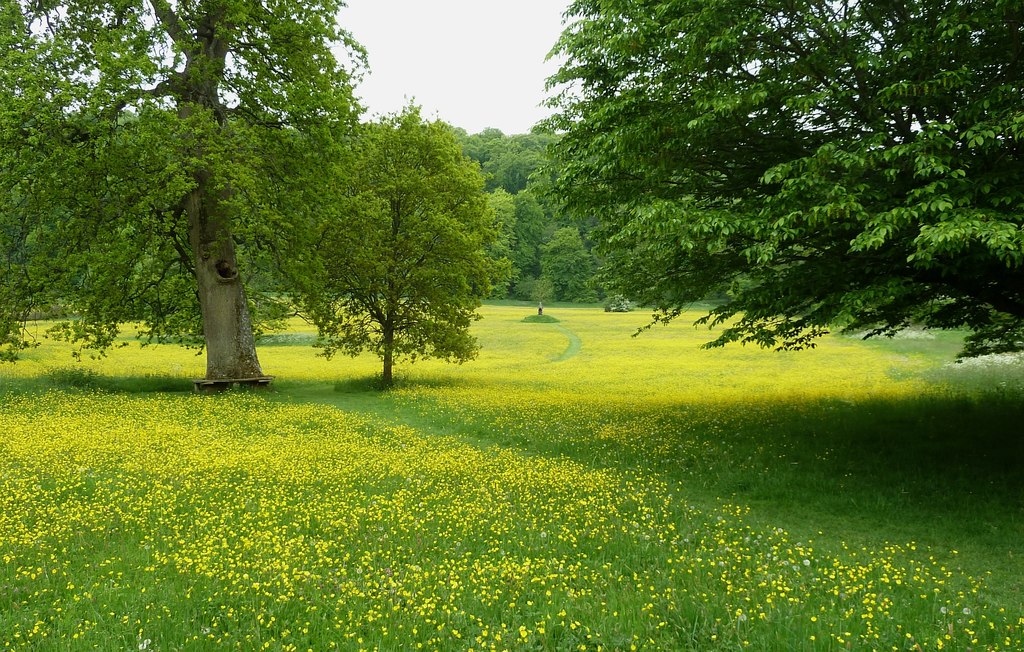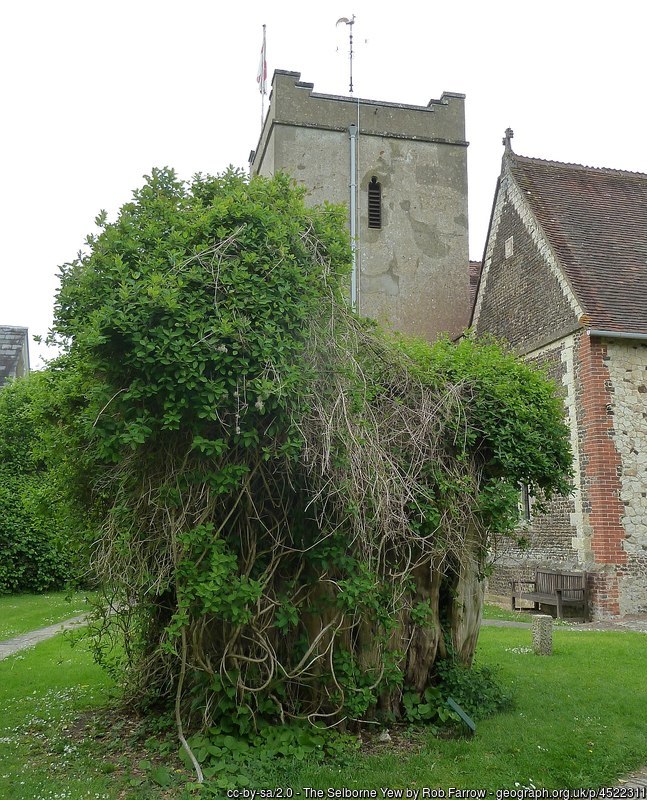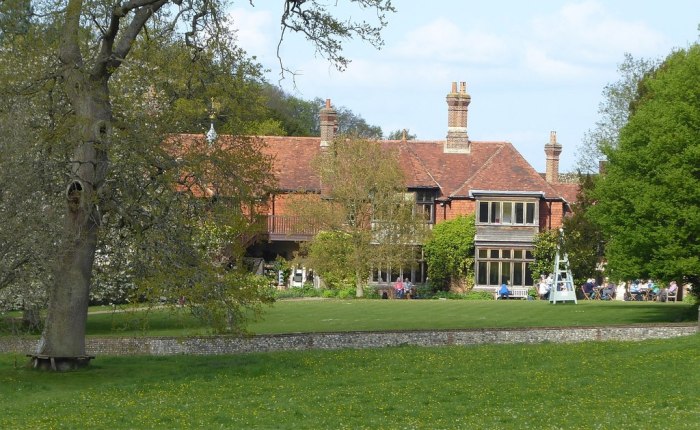Tucked away in a quiet part of Hampshire, nestling in the narrow lanes beneath the northern slopes of the South Downs, lies a place of pilgrimage for lovers of the natural world.
Welcome to Selborne
It was in this quiet village that the world renowned Gilbert White was born in 1720 and served as Curate for much of his life. His house, ‘The Wakes’ (photo above) is now a museum dedicated to his work and includes his 25 acre garden sitting under the wildlife-rich woods on the slopes of the Downs, the Selborne ‘Hangar’, where ‘Nature hangs her slopy woods to sight‘.
The house was owned by the Oates family in later years and also houses the Oates Collection which celebrates the lives of 19th century explorers Frank Oates and Captain Lawrence Oates who travelled with Scott on the ill-fated South Pole Expedition.
Jane Austin’s house at Chawton was only 4 miles away. She was 18 when Gilbert White died and would have known about his work. Her brother wrote a poem praising it.

‘The Natural History of Selborne’
This classic book, one of the first written works on natural history, is a collection of letters to two other naturalists. First published in 1789 it has never been out of print, having gone through 300 editions. It also includes a section ‘antiquities’ on the local geology and archaeology of the area.

Gilbert White was no armchair naturalist, gaining his knowledge from reading other men’s books. His approach was refreshingly new for his age—his were proper ‘field studies’ based upon his own meticulous details of the plants and animals he noticed as he walked about his local patch with notebook in hand.
He wrote: ‘The investigations of the life and conversations of animals, is a concern of much more trouble and difficulty, and is not to be attained but by the active and inquisitive, and by those who dwell much in the country.’
We watch him sitting in the ‘sheltered unobserved retreat‘ in his meadow, observing the swallows swooping over the grass, or see him pausing before going into the church to enjoy the swifts darting over the churchyard. We follow him on a pastoral visit to a villager, stopping by a pond to look for signs of frog spawn, or checking a piece of hedgerow to see if a particular nest of eggs have hatched.

Nature Watching with Gilbert White
We’re invited to share with him in these delights as he records the details of each bird’s behaviour, migration, nesting period and song. Insect life, mammals and plants were as carefully recorded. His records of birds singing throughout the year is impressive. Here’s a delightful note from Feb. 12th 1771 :
“My musical friend, at whose house I am now visiting, has tried all the owls that are his near neighbours with a pitch-pipe, set at concert-pitch, and finds they all hoot in B flat. He will examine the nightingales next spring.”
Many of the birds he mentions are now on the endangered ‘Red List’. He speaks of seeing large flocks of Stone Curlews in the field of a farmer friend near Chichester. Like many other birds he mentions, these are a disappearing rarity today. A hundred years before Charles Darwin made his studies on the influence of the humble earthworm, Gilbert White was writing:
“Earthworms, though in appearance a small and despicable link in the chain of nature, yet, if lost, would make a lamentable chasm … worms seem to be the great promoters of vegetation, which would proceed but lamely without them.”
Letter XXXV, 20th May 1777
How fascinated White would have been to know about our recently discovered ‘wood-wide-web’ of underground mycelia.

The lasting legacy of Gilbert White is not merely a charming reminder of rural English countryside of a bygone era, but a lesson for all lovers of nature in spending time listening, looking and exploring the natural beauty of our local area. We don’t need to travel far either, for White covered his beloved local patch on foot always with that notebook ready to hand.
In St Mary’s Church in the village, a beautifully fitting memorial to White was added in the 1920’s, the ‘St Francis Window’, picturing St Francis feeding the birds. All the birds pictured in the stained glass were recorded in the book. It makes a fine tribute to a great naturalist.
Thanks for your company
All the photos are – © Copyright Rob Farrow and licensed for reuse under this Creative Commons Licence

I would love to visit Selborne! I remember passing by the village on the way to Portsmouth after picking my daughter up from Egham and seeing the beautiful hangar from the road! I’ve never been to Chawton, either! I haven’t fed my birds for a year or more after having done so continuously for over 30 years. We have a rookery next to our house and thirty rooks can get rid of a whole feeder full of sunflower seeds in less than an hour. Squirrels chewed through all my feeders, even the squirrel-proof ones and the last straw was when I bought an especially expensive one that was sure to deter squirrels and just one day after putting it out it was wrecked! I had to give up using ground feeders because of rats! What a tale of woe!
LikeLike
Sorry to hear about your aggressive rooks and squirrels! Happily we are troubled by neither here though we have had real problems with squirrels while on holiday elsewhere. Here I use a heavy duty steel bar feeder to which I add a homemade roof to keep the rain off. We don’t put feed on the ground. The robins can reach the seeds through the bars. The blackbirds also manage it by flapping frantically in order to do so – very amusing to watch. I do hope you can enjoy your birds in other ways.
LikeLike
I very much enjoyed my visit to Selborne with you Richard. I admire what Gilbert White did but I’m afraid I tried to read his ‘natural history’ and just couldn’t get on with it.
LikeLike
Thanks for joining in the visit Andrea. I think the Natural History’ is best dipped into for scientific observations, which I find fascinating. It’s that record of Gilbert White’s notebook that’s all important. I agree the flowery18th century language doesn’t read easily today. Of course it wasn’t written to be read as a book.There’s no Jane Austin here, even though she lived only about 4 miles away!
LikeLiked by 1 person
An interesting post, Richard. What a passion he had for nature. That stained glass is divine.
LikeLike
Thanks Cynthia. A tributary of our local river Arun, here in West Sussex, flows through Selbourne. I like to think that something of Gilbert White’s enthusiasm has flowed through to me here – as well as to many others worldwide!
LikeLike
What a delightful, gentle, visit, Richard. I used to live not far from Selborne, my mother was a huge fan of White’s and went there several times, i think, though I haven’t made it yet. Nor to Chawton either, come to that. Bill Bryson writes nicely about both in his “Road to Little Dribbling”. I hope it’s not too soon to wish you a very happy Christmas.
LikeLike
Thank you Mike. Christmas greetings to you too. It’s interesting to hear that you know the area. I’m glad you had such a wise mother! I enjoy Bill Bryson’s writing, but I don’t know this one. I must read it.
LikeLike
I knew this area in the early and mid 70’s, I hope it hasn’t changed overmuch. I remember being very excited to be living in such a hallowed place 🙂
LikeLike
So pleased to hear you knew Selbourne. Happily I think this lovely area of Hampshire is safe now as it’s part of the South Downs National Park – such a relief! I think you live in a pretty special place as well.
LikeLiked by 1 person
Your blog is very nice… Thanks for your great work!!
LikeLike
Thank you. You’re most welcome.
LikeLike
A very beautiful place.
LikeLike
Yes indeed. Gilbert White was a great naturalist too.
LikeLike